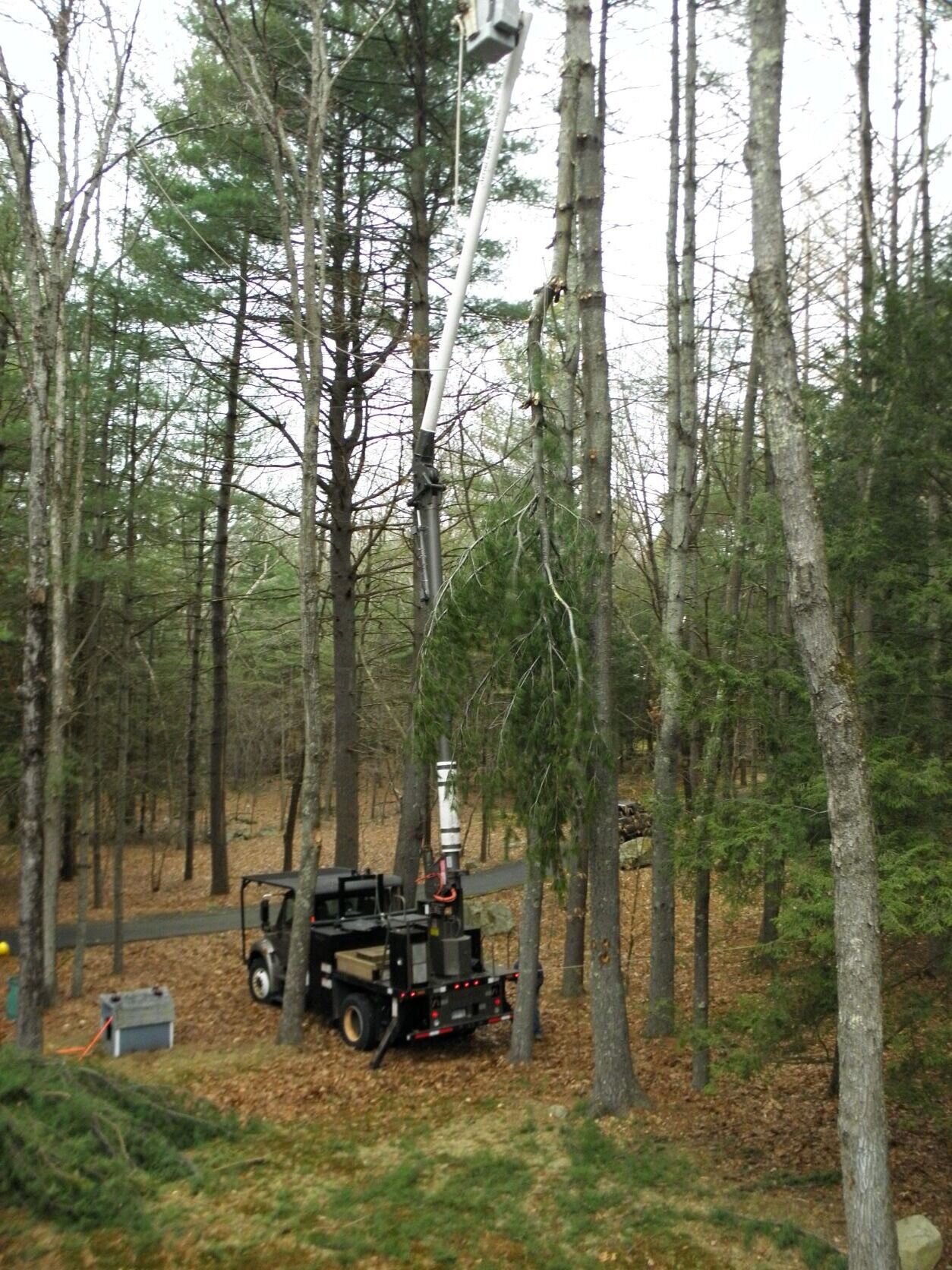It’s never easy for an arborist to cut a tree that appears to be healthy. Our goal is to offer these amazing specimens everything they need to grow and thrive.
However, sometimes it’s just not possible to save a tree and, while it may seem unkind to cut that life short but cutting the tree down, it can be the wise thing to do.
Unhealthy Trees
A tree can appear to be healthy, with unblemished bark and lots of foliage or, in the case of a pine, deep green needles and lots of pinecones. Like animals in the wild, a tree will hide illness as a form of protection. In an earlier blog, we noted that a woodpecker had singled out what otherwise appeared to be a healthy pine tree. The top of the 120-foot tree was thick with dark green needles and the bark was unblemished but for the holes that the woodpecker had made.
An initial diagnosis was that the woodpecker had gone after the tree for no good reason. The homeowner was upset and began to think of ways to scare the bird off, such as plastic owls that might make the woodpecker believe there was a predator nearby.
The holes that the bird had made were four or more inches deep, mortally wounding the tree. Given that this tall pine tree was only about 45 feet from the corner of the house, the homeowner was scared about when and how the tree would decide to fall when it finally succumbed to the bird damage.
A Challenging Take Down
Unless you’re cutting a sapling, you should always assume that cutting down a tree is going to be dangerous and difficult. To address the situation, you need the right tools, experience, and a bit of intestinal fortitude.
We have a bucket truck and that was a great help as we limbed the tall pine tree to prepare it for the takedown. Preparation is key as is coordination. When an arborist is cutting so high off the ground, it’s vital that the people on the ground are not in the way of falling material. They perform a critical job as they keep an eye on the bucket truck and the wind and other site factors, such as traffic if we’re working near the road. Those trucks are sturdy but a good gust of wind or a speeding vehicle can turn a simple wobble into a deadly situation if you’re caught unawares with a chainsaw.











